- Administrator
- Albums and Singles
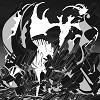 For their latest collaboration, Boris and Merzbow have produced an elemental and tempestuous album. It sounds like a year’s worth of weather condensed into the space of a CD.
For their latest collaboration, Boris and Merzbow have produced an elemental and tempestuous album. It sounds like a year’s worth of weather condensed into the space of a CD.Hydra Head
Sun Baked Snow Cave surprised me greatly. I am familiar with both artists, although this is the first of their collaborations I’ve heard, and was expecting an hour long sludgy, noise marathon. Instead this is an hour of varying moods and sonic textures. It starts with some very sparse acoustic guitar which evokes a peaceful and slightly tense atmosphere. This continues for about fifteen minutes and over this time I began to feel relaxed and cozy. Then Akita plugs himself in and the atmosphere changes significantly. He slowly layers in icy blasts of noise that sounds like a gale in the middle of Alaska. Boris then start turning on their amps and build up some droning low frequency feedback and a haunting and piercing guitar line. With the volume turned up this is a cleansing experience and if it went on any longer than it did I’m sure icicles would have started forming in the room.
For the last quarter of an hour, the roar dies down and some elegant, clean electric guitar with Akita’s glitchy crackles and static ushers in a feeling of summery warmth. I’d never thought I’d hear myself say that about either artist. The previous drama of Sun Baked Snow Cave is erased and then I realized how drained I felt from listening to it. Sun Baked Snow Cave closes in a way that mirrors the beginning of the album and the weather metaphor is strengthened by this cyclical structure.
I wouldn’t say that Sun Baked Snow Cave is the best work that Boris or Merzbow have done but it is certainly one of the most interesting albums that either of them have put out. It’s given me the kick to go track down their other collaborations to see what I’m missing.
samples:
Read More
- Administrator
- Albums and Singles

Artist: Various Artists
Title: Hail Be You Sovereigns, Lief And Dear
Catalogue No: CSR178CD
Barcode: 5060174954160
Format: 2 x CD in jewelcase
Genre: British Folk
Shipping: 31st December
Fourth release in the Cold Spring Folk Series.
John Barleycorn is king of the fields, gloriously robed in green and crowned with sheaves of golden wheat. He reigns all summer long, but is cut down and deposed at harvest-time, only to be reborn and reinstated the following year. He relies on no arid theory to justify his rule, but only his endless generosity to his subjects. The King is dead – long live the King.
30 tracks from the cream of current dark British Folk music.
Tracks:
Disc 1: 1. The Hare And The Moon - ‘The Willows’ | 2. The Elder Tree - ‘The Lonely Willow’ | 3. Foxpockets - ‘Twelve Sisters’ | 4. Venereum Arvum - ‘CWMD - A Diamond In My Eye’ | 5. Mary Jane - ‘Wherever She Goes’ | 6. Andrew King - ‘Of The Subterranean Inhabitants’ | 7. Earthling Society - ‘The Great Return’ | 8. David Kidman - ‘The Green Man’ | 9. The Rowan Amber Mill - ‘On Ridgeway Fields’ | 10. Steve Tyler & Andy Clarke - ‘My Lady’s Coach’ | 11. Xenis Emputae Travelling Band - ‘Elicona II’ | 12. Sixpenny Wayke - ‘Under England’s Sky’ | 13. Heed The Thunder - ‘Easter Tree’ | 14. Galley Beggar - ‘Sun God’ | 15. Hills Have Riffs - ‘Drugged Shepherd’
Disc 2: 1. A Tiding Of Magpies - ‘Coleman Grey’ | 2. Earthling Society - ‘An Elf-Knight’s Lament’ | 3. Thornland - ‘Ancient Trees And Fractured Spines’ | 4. Foxpockets - ‘Widow’s Walk’ | 5. Colossloth - ‘BDFDS’ | 6. Beneath The Oak - ‘White Raven, Black Dove’ | 7. David Whitwell - ‘When My Blues Retire’ | 8. David Kidman - ‘Summon Up The Sun’ | 9. Sol-De-Muerte - ‘Sentinel’ | 10. Tim Graham - ‘Hanging Ivy’ | 11. Woodwose - ‘Frenetique’ | 12. The Transmutations - ’The Bramble Briar’ | 13. Finglebone - ‘Flouse Hole Sun’ | 14. Nathaniel Robin Mann - ‘Moonshiners’ | 15. Lost Harbours - ‘Hymns & Ghosts Pt 2′
Read More
- Administrator
- Albums and Singles
 These four musicians completely overcome the wedge so often forced between musical excellence and immediate accessibility. Too many buckets of wank and showmanship have been filled in the pursuit of making a technically demanding record that simultaneously sounds and feels exciting. "SZ2" laughs in the face of that problem with bravado.
These four musicians completely overcome the wedge so often forced between musical excellence and immediate accessibility. Too many buckets of wank and showmanship have been filled in the pursuit of making a technically demanding record that simultaneously sounds and feels exciting. "SZ2" laughs in the face of that problem with bravado.
A low hum of potential chaos buzzes down the opening strings of the B EP from Battles like a wind of revenge descending the storm-drowned mountains to the west. When the jolt of the percussion strikes like the bitch-slap that it is, the flurry of an electronic menace comes with it, the sound of apocalyptic and deformed trumpets screaming over everything. The energy in "SZ2" is a bit mind-bending. These four musicians sound as though they're attempting to weave in and out of each other's performance like running between raindrops in a torrential downpour. The music sounds busy but Battles defy the edge and shake addictive songs out of their frenzied craftsmanship. "Tras3" and "Ipt2" are brief, but feel weighty. "Ipt2" is an especially fun mesh of snapping drums and whistling keyboards. They sound as though they're a part of "SZ2" more than anything else and they wind the toil of that track down so that "Bttls" can begin its slow burn. Radio interference and the rumble of a determined machine ooze underneath an accompaniment of bouncing wood blocks and a spider-like toy crawling through a dream. Demented and subtle vocals howl distantly into the fabric of the song and then a gash of reversed percussion and Kodo-worthy pounding leaves any possible survivors of this apocalypse too weak to care anymore. The whole track is just a bit unsettling and, like the rest of the EP, doesn't bother with unnecessary extension or superfluous appendages. "Dance" ends everything in a hail of spitting rhythms and wailing melodies. Where "SZ2" attacked like a cold, exact incision, "Dance" rockets by in a flurry of drunken fists and irregular stabs. There's a lot of diversity on this EP and Battles manage to keep everything together while making sure that this doesn't end up being just another "impressive" record that sits on the shelf because it isn't catchy enough or because it's only worth listening to for the impressive technicality that saturates it.
samples:
 
Read More
- Administrator
- Albums and Singles
Crouton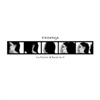 Continuing the label's tradition of beautifully packaged, limited edition releases, Endingsis the second text + music project from Crouton founder Jon Mueller. Anestablished and diverse drummer, playing with indie instrumentalistsPele, Collections of Colonies of Bees, and a myriad of improvensembles, Mueller's written works offer unique glimpses into thestrange reality of a clearly eccentric artist whose role is nevermerely complimentary. Endings combines eleven very shortstories (in a boxed, spineless book) with a 30-min. CD-R of readingmusic, and several black-and-white illustrations by Kaveh Soofi, theBay Area graphic artist who designed the cover for Pele's last album.Mueller's stories are by far the most exciting piece of the puzzle. Theauthor uses the concept of "endings" to create postcard lengthvignettes launching the reader into a darkly absurd and chaotic worldwhere narrative seems to strive immediately toward a propheticconclusion. The extreme shortness of the texts provides that nocharacter or scenario is developed outside of a series of scrupulous,often ridiculous details serving only the anticipation of some unifyingfinale. Mueller always delivers the goods, in the sense that he hurlseach clipped plotline into an unmistakable, impassable "end;" howeverhis endings are never the epiphanies his stories require. Instead theyoffer only the further mystification of an already lost cast ofcharacters, managing to transform a clever variety of hum-drum pursuitsand circumstances into windows to another hellish dimension. A man,inexplicably followed while on the way to the grocery store, eventuallyconfronts his enraged pursuer, severs his own finger, and proceeds toreverse the chase, threatening the other man with the bloody appendage.Another character puts on a play for his dinner guests starring apicture of his dead son, whom he directs: "Sing, boy! Sing!" A businessexecutive returns from an emergency call to find his interruptedinterviewee sipping from the potential employer's coffee cup, his eyesrising in blank defiance. Most impressive is Mueller's ability tostreamline each story with a detail-driven first-person narrative thatassumes normalcy and connectedness, only to completely break down bythe end. More than simple plot twists, the author's endings might becalled 'anti-epiphanies' in the way they are positioned, through astriking economy of language, to effectively dismantle the story'sprior logic. Mueller's musical accompaniment is unlike anything I'veheard from him yet and clearly serves the box's theme. A fadedsymphonic loop plays over and over to simulate a continuous,regenerating "ending," essentially a false ending that, in its 19-sec.length, reminds me of the obscured, darkened tones of a Badalamentiscore played out like one of William Basinski's Disintegration Loops,only without disintegrating. The atmosphere is soothing for a smallsecond, but ultimately turns to a sinister, anxious tension, both aptand almost nauseating when coupled with Mueller's words. Soofi'sillustrations are less fitting, but interesting nonetheless. From thelook of it they are digital images arranged comic-strip-style butwithout any explicit narrative. The images are almost all stylized,grey toned portraits, progressively clouded, shadowed, fragmented,cropped, and later barraged by clusters of nail-covered blocks. I cansee comparisons to Francis Bacon's portraiture, with the sectionedmurkiness and sketchy inaccuracies reminding me of animations by SouthAfrican artist William Kentridge, though Soofi's work has an unsettlinggeometric base that feels very unique. Endings is well worth itto anyone keen on interesting packaging and multimedia formats; I amstill involved in picking apart and connecting the contents of thisbeautiful release, no end in sight.
Continuing the label's tradition of beautifully packaged, limited edition releases, Endingsis the second text + music project from Crouton founder Jon Mueller. Anestablished and diverse drummer, playing with indie instrumentalistsPele, Collections of Colonies of Bees, and a myriad of improvensembles, Mueller's written works offer unique glimpses into thestrange reality of a clearly eccentric artist whose role is nevermerely complimentary. Endings combines eleven very shortstories (in a boxed, spineless book) with a 30-min. CD-R of readingmusic, and several black-and-white illustrations by Kaveh Soofi, theBay Area graphic artist who designed the cover for Pele's last album.Mueller's stories are by far the most exciting piece of the puzzle. Theauthor uses the concept of "endings" to create postcard lengthvignettes launching the reader into a darkly absurd and chaotic worldwhere narrative seems to strive immediately toward a propheticconclusion. The extreme shortness of the texts provides that nocharacter or scenario is developed outside of a series of scrupulous,often ridiculous details serving only the anticipation of some unifyingfinale. Mueller always delivers the goods, in the sense that he hurlseach clipped plotline into an unmistakable, impassable "end;" howeverhis endings are never the epiphanies his stories require. Instead theyoffer only the further mystification of an already lost cast ofcharacters, managing to transform a clever variety of hum-drum pursuitsand circumstances into windows to another hellish dimension. A man,inexplicably followed while on the way to the grocery store, eventuallyconfronts his enraged pursuer, severs his own finger, and proceeds toreverse the chase, threatening the other man with the bloody appendage.Another character puts on a play for his dinner guests starring apicture of his dead son, whom he directs: "Sing, boy! Sing!" A businessexecutive returns from an emergency call to find his interruptedinterviewee sipping from the potential employer's coffee cup, his eyesrising in blank defiance. Most impressive is Mueller's ability tostreamline each story with a detail-driven first-person narrative thatassumes normalcy and connectedness, only to completely break down bythe end. More than simple plot twists, the author's endings might becalled 'anti-epiphanies' in the way they are positioned, through astriking economy of language, to effectively dismantle the story'sprior logic. Mueller's musical accompaniment is unlike anything I'veheard from him yet and clearly serves the box's theme. A fadedsymphonic loop plays over and over to simulate a continuous,regenerating "ending," essentially a false ending that, in its 19-sec.length, reminds me of the obscured, darkened tones of a Badalamentiscore played out like one of William Basinski's Disintegration Loops,only without disintegrating. The atmosphere is soothing for a smallsecond, but ultimately turns to a sinister, anxious tension, both aptand almost nauseating when coupled with Mueller's words. Soofi'sillustrations are less fitting, but interesting nonetheless. From thelook of it they are digital images arranged comic-strip-style butwithout any explicit narrative. The images are almost all stylized,grey toned portraits, progressively clouded, shadowed, fragmented,cropped, and later barraged by clusters of nail-covered blocks. I cansee comparisons to Francis Bacon's portraiture, with the sectionedmurkiness and sketchy inaccuracies reminding me of animations by SouthAfrican artist William Kentridge, though Soofi's work has an unsettlinggeometric base that feels very unique. Endings is well worth itto anyone keen on interesting packaging and multimedia formats; I amstill involved in picking apart and connecting the contents of thisbeautiful release, no end in sight.
samples:
Read More
- Administrator
- Albums and Singles
Polyvinyl Just like their previous album, Face.(a,this year's release from Collections of Colonies of Bees manages tosqueak in very quietly just underneath the radar, without a lot of hypeor fanfare, to surprisingly become one of my top albums of the year.The formula holds close to the last album: taking an instrumental rock"band" setup and mutating it through inhuman editing. It's a setupwhich has gained popularity in the last couple years with groups likeRadian, Nudge, Trapist, and Supersilent, but Collections of Colonies ofBees have become masters at the art. Pele have decided to call itquits, however, the Collections lineup is now almost identical to Pele,with Jon Mueller and Chris Rosenau bringing other Pele alumni Jon Minoron board this time along with Jim Schoenecker. (Perhaps they weregetting tired of being in TOO many bands—see above review!) Bright andspringy guitar melodies live harmoniously with manipulated twitters,beats and whirrs, while miscellaneous unidentifiable objects providerhythm colorization in spots. Fans of both the upbeat Pele andMuller/Rosenau's improvisational experimental outings find a mediumhere, as the line is delicately walked between pop melodies and nerdyimprovisation. Some songs, (nine out of ten are named "fun") are mostdecidedly organically driven, while some are clearly more electronic.The story of the recordings is that the band took a number of differentapproaches to each composition, and the Japanese version of Customer,on Some of Us, uses the more electronic versions of the more organicsongs here and more organic versions of the more electronic songscontained here. If that's not confusing enough, a vinyl edition of therecord contains only the "electronic" songs from both. While a disclike this might be good for an afternoon read at home, I highlyrecommend playing at loud volumes to fully enjoy some of the fantasticlow frequency bass sounds and alien ticks which dance around the ears.Like a fantastic sushi dinner, at the end I'm eager for more, andunfortunately that means getting a hold of Customer's Japanese counterpart.
Just like their previous album, Face.(a,this year's release from Collections of Colonies of Bees manages tosqueak in very quietly just underneath the radar, without a lot of hypeor fanfare, to surprisingly become one of my top albums of the year.The formula holds close to the last album: taking an instrumental rock"band" setup and mutating it through inhuman editing. It's a setupwhich has gained popularity in the last couple years with groups likeRadian, Nudge, Trapist, and Supersilent, but Collections of Colonies ofBees have become masters at the art. Pele have decided to call itquits, however, the Collections lineup is now almost identical to Pele,with Jon Mueller and Chris Rosenau bringing other Pele alumni Jon Minoron board this time along with Jim Schoenecker. (Perhaps they weregetting tired of being in TOO many bands—see above review!) Bright andspringy guitar melodies live harmoniously with manipulated twitters,beats and whirrs, while miscellaneous unidentifiable objects providerhythm colorization in spots. Fans of both the upbeat Pele andMuller/Rosenau's improvisational experimental outings find a mediumhere, as the line is delicately walked between pop melodies and nerdyimprovisation. Some songs, (nine out of ten are named "fun") are mostdecidedly organically driven, while some are clearly more electronic.The story of the recordings is that the band took a number of differentapproaches to each composition, and the Japanese version of Customer,on Some of Us, uses the more electronic versions of the more organicsongs here and more organic versions of the more electronic songscontained here. If that's not confusing enough, a vinyl edition of therecord contains only the "electronic" songs from both. While a disclike this might be good for an afternoon read at home, I highlyrecommend playing at loud volumes to fully enjoy some of the fantasticlow frequency bass sounds and alien ticks which dance around the ears.Like a fantastic sushi dinner, at the end I'm eager for more, andunfortunately that means getting a hold of Customer's Japanese counterpart.
samples:
Read More
- Administrator
- Albums and Singles
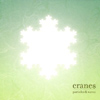 While the days of guitar maximalism are long in Cranes' past, Particles & Waves showcases a band who is doing a very good job when they attempt to recapture the stunningly haunting sound that drew so many fans a decade ago. On songs like "K56," and "Here Comes the Snow," Alison Shaw's piercingly high pitched voice is fragile and lonely, almost naked against the patient and pretty melodies. However, there are certain points where I simply cannot connect with the music.
While the days of guitar maximalism are long in Cranes' past, Particles & Waves showcases a band who is doing a very good job when they attempt to recapture the stunningly haunting sound that drew so many fans a decade ago. On songs like "K56," and "Here Comes the Snow," Alison Shaw's piercingly high pitched voice is fragile and lonely, almost naked against the patient and pretty melodies. However, there are certain points where I simply cannot connect with the music.
When Jim Shaw sings on "Every Town," every bit of attraction that was drawing me in begins to push me away. It's almost like this on "Avenue A," where mediocre lyrics don't make up for a mediocre tune. Fans of their French songs might find joy in the title track, and I'm completely sucked in by the swirling, repetitious melody of "Astronauts." I'm on the fence with the songs "Streams," and the closer, "Light Song," as they aren't as clear cut as the rest. It's as if they're in a struggle, trying to find a balance between guitar, piano, and electronic interplay with Alison's vocals. The dissonances almost work but I'm just not completely sold. Sound effects don't quite make up for what seems like an instrument is missing. This is somewhat representative of the album as a whole. Being on a major label, then a relatively large minor label, then dropped can have a wide range of effects on the music of an act who decides to continue: either the band can go back to the drawing board and reinvent themselves, return to the sound that drew attention in the past, or continue down the path of making things even less accessible and marketable than before. Some of these paths work for some while others work for others. In the case of Cranes, it seems as if they are trying to find which path they're going to take. There's a lot that works on this album, but an undeniable amount which doesn't. The stuff that does work is good enough to prove that Cranes can't be written off yet, and there's plenty more still to anticipate from the group.
samples:
 
Read More
- Administrator
- Albums and Singles
Everest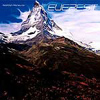 Having one or two good songs sandwiched between pointless exercises inmelodic looping is quite frustrating. Even worse is when a minute totwo minutes of a song are utterly captivating while the rest of itsimply seems like an effort to move up a very steep hill. Locatedsomewhere in the middle of this messy album is a vacuum of badproduction that consumes all of the stumbling rhythms and accentuatesthe rather flat and circular melodies. I'm never quite sure which I'msupposed to be listening to more and a complete lack of dynamics in thesong-writing only makes the banality of Heimlich Maneuverall the more blinding. For example, near the end of the album"Faulhorn" begins to resonate above and beyond the routine that hasbeen the entirety of the album; but as the song progresses, it becomesobvious that what I'm dealing with is actually a sonic cock-tease. As abass line and regiment of percussive sounds march into the piece,everything begins to blend together into a murky soup. Repeat andrecycle and a large portion of the album is enumerated and elucidatedas much as is possible within the realms of boredom. "Ro3" and "Dex"both flaunt a predisposition towards excellence and, to some extent,"Dex" actually succeeds. Maybe the track's short running time has alittle bit to do with its success or maybe it's because Everest don'tbother with adding layers of unnecessary instrumentation andornamentation. Everest work best on a simple and direct basis: anyexuberance or decoration kills the mood they can develop with solittle. "Falke," when it begins, rolls like a gorgeous thunder andcontinues to do so without being stuffed full of spiffy effects orabrupt changes in thematic direction. Even if the band could escapetheir inability to keep everything within a creatively controllablespace, they'd have to deal with the monotonous tone of the album as awhole. Many of their warm and welcoming synth tones feel rehashed bythe time "Channel Sky" cuts out. There's something lovable about thisrecord, but it's ultimately just another example of how to loop beatsand melodies ad nauseam. To be fair, there are a few tracks thatcould've made up the contents of a beautiful little EP, but within theconfines of the rest of the album they suffer considerably.
Having one or two good songs sandwiched between pointless exercises inmelodic looping is quite frustrating. Even worse is when a minute totwo minutes of a song are utterly captivating while the rest of itsimply seems like an effort to move up a very steep hill. Locatedsomewhere in the middle of this messy album is a vacuum of badproduction that consumes all of the stumbling rhythms and accentuatesthe rather flat and circular melodies. I'm never quite sure which I'msupposed to be listening to more and a complete lack of dynamics in thesong-writing only makes the banality of Heimlich Maneuverall the more blinding. For example, near the end of the album"Faulhorn" begins to resonate above and beyond the routine that hasbeen the entirety of the album; but as the song progresses, it becomesobvious that what I'm dealing with is actually a sonic cock-tease. As abass line and regiment of percussive sounds march into the piece,everything begins to blend together into a murky soup. Repeat andrecycle and a large portion of the album is enumerated and elucidatedas much as is possible within the realms of boredom. "Ro3" and "Dex"both flaunt a predisposition towards excellence and, to some extent,"Dex" actually succeeds. Maybe the track's short running time has alittle bit to do with its success or maybe it's because Everest don'tbother with adding layers of unnecessary instrumentation andornamentation. Everest work best on a simple and direct basis: anyexuberance or decoration kills the mood they can develop with solittle. "Falke," when it begins, rolls like a gorgeous thunder andcontinues to do so without being stuffed full of spiffy effects orabrupt changes in thematic direction. Even if the band could escapetheir inability to keep everything within a creatively controllablespace, they'd have to deal with the monotonous tone of the album as awhole. Many of their warm and welcoming synth tones feel rehashed bythe time "Channel Sky" cuts out. There's something lovable about thisrecord, but it's ultimately just another example of how to loop beatsand melodies ad nauseam. To be fair, there are a few tracks thatcould've made up the contents of a beautiful little EP, but within theconfines of the rest of the album they suffer considerably.
samples:
Read More
- Administrator
- Albums and Singles
Strange Attractors Audio House
samples:
Read More
- Administrator
- Albums and Singles
THE SLAVES
Ocean On Ocean
2LP/DL The Helen Scarsdale Agency HMS023
Release date: November 27
http://soundcloud.com/helen-scarsdale
The mystical drone-folklorist Jon Porras introduced us to the luminous sound of The Slaves, so we thought it fitting that he should expound upon their radiant shoegazing heaviness. Here speaks Mr. Porras:
"A shadow moves beneath the water. Ocean On Ocean: two abysmal surfaces echoing into one another. Mutually reflecting an endless geologic score to a post-apocalyptic litany. Planes of ambivalence obliterated by light, voices eclipsed by devotional low end, synthesized stereography spiraling from an eternal core. Hovering above the weighted disposition of Doom and below the consolation of Shoegaze, the duo transmit a burdened grace that unfolds like a radiant mammal writhing in black water. We discover an object heavy and obtuse until placed into the sea. Lines of light swell and dissipate behind hushed lyrics. Feedback and whitenoise ebb and flow, the mammal's breath hollowed, tumbling below the surface. The hum offset and displaced by water that surrounds. Holographic accord materialized by invalidated hopefulness. We are unsure and skeptical of what this optimism holds. What lies waiting at the depths carved between these two reflective surfaces? Ocean On Ocean implies a tangible province exists between these mirrored planes. A staircase built from reflective feedback, extending horizontally into bliss. A bliss that is fleeting and simultaneously petrified in the present. A paradox realized by the duo's distillations of urgent ambiance and luminescent melancholy. Conjuring environments that billow out from instrumental restraint, Ocean On Ocean is an exercise in disciplined abstraction.
Initially a cd-r, Ocean On Ocean reaches its supreme possibility today. An acoustic artifact cast into alchemical tangibility, these recordings are finally at peace on vinyl. Now the relics hidden between these Oceans can be crystallized."
The Slaves are BARBARA KINZLE and BIRCH COOPER, who hail from Portland, Oregon and who have released other works on Digitalis and Paradigms to considerable acclaim, drawing favorable comparisons to the likes of Grouper, Slowdive, Earth, and Barn Owl.
Limited to 400 copies. Remastered for vinyl by James Plotkin. Cut at 45RPM.
Read More
- Administrator
- Albums and Singles
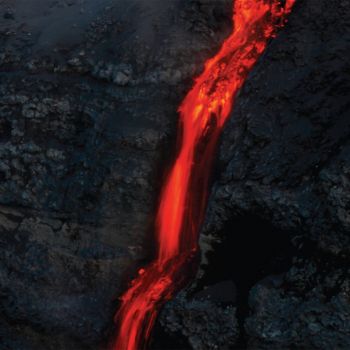 Off/On is a small but important step forward for Forma. Compared to the eponymous release from last year, it is similar in its sonic trappings, but for a group whose whole identity is fixed around nostalgia for kosmische synth loops and drum machine motorik beats, this record demonstrates how they can grow beyond their influences. The signature sound of the group is fleshed out in greater layers, with better production, and teems with hopeful optimism on its standout songs, hinting at an ambitious streak about to surface.
Off/On is a small but important step forward for Forma. Compared to the eponymous release from last year, it is similar in its sonic trappings, but for a group whose whole identity is fixed around nostalgia for kosmische synth loops and drum machine motorik beats, this record demonstrates how they can grow beyond their influences. The signature sound of the group is fleshed out in greater layers, with better production, and teems with hopeful optimism on its standout songs, hinting at an ambitious streak about to surface.
Forma's visual aesthetic hints at the sound. Their first album's cover was a wordless, sandy expanse of desert, shadowed at its half by higher ground. It was cosmic and terrestrial too, ceding to an obsession with simplicity and minuscule details. Meanwhile, Off/On looks like a cropped cover from an edition of National Geographic, again wordless and bare, but with a river of red-hot magma splitting apart a dark crust of volcanic earth; some exposed vein of molten light set flowing.
Each song carries a certain unique timbre based around which interesting effects the group can extract from their abundance of equipment. The eponymous "Off/On" transforms a propulsive beat and bassy arpeggios into spaced-out dark disco. "Mécanique" is the most impressive song off the record, a near-spiritual successor to Kraftwerk's "Europe Endless," which bursts open into a miniature epic over the course of its eleven minutes. Laid smack in the middle of the record with no forewarning, this is a brilliant moment of clarity, and one of my favorite songs of the year. The rest of the album, meanwhile, blurs together into a pleasant haze, successfully pairing scarce rhythms and pristine electronics, closely resembling a soundtrack to the most beautiful educational program ever produced.
As last time, all of these pieces (apart from the two mentioned above) go under the designation of "Forma" followed by a kind of catalog number. I assume Forma's decision to name their similar songs like this is a purposeful move; their similar structures aren't due to a lack of ideas so much as a desire to perfect one or two. These ideas are fine as is, and it is good to hear them manifest in new ways on each record, but I can't deny the impact of a song like "Mécanique." This is an accomplished piece which melds pop and heady futurism so well it escapes the rest of the record. I hope to hear this territory explored more often.
samples:
Read More
- Administrator
- Albums and Singles
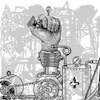 Despite his seeming obsession with angels (just look at the list of titles of Earth’s albums and songs), Dylan Carlson’s current obsession with fairies and the occult history of England came as a bit of a surprise. Images of him playing fey faux folk music in tights came to mind but I decided to give him the benefit of the doubt. I am glad I did as his drcarlsonalbion project is turning out to be just as intriguing as his work with Earth.
Despite his seeming obsession with angels (just look at the list of titles of Earth’s albums and songs), Dylan Carlson’s current obsession with fairies and the occult history of England came as a bit of a surprise. Images of him playing fey faux folk music in tights came to mind but I decided to give him the benefit of the doubt. I am glad I did as his drcarlsonalbion project is turning out to be just as intriguing as his work with Earth.
 
A few weeks ago, Carlson played a show here in Dublin devoted to this new direction and, unfortunately, it seemed like a mess. Using pre-recorded beats and too many effects on his guitar, I felt it was self-indulgent and a major misstep for an artist who has been so consistently brilliant over the last 20 years. Above all, I was regretting having pre-ordered this release (and the Kickstarter for the forthcoming drcarlsonalbion album). However, when these 7" singles finally arrived, I was completely taken aback by how good they were.
The first of the two discs feature poetry written and recited by Rosie Knight (the Hackney Lass). Combining epic Greek imagery with a story of a broken home and foster care, "Hackney Iliad" is a powerful and moving work by Knight. Carlson’s guitar, instead of competing with Knight’s voice, pushes further into the foreground. On the other side, "Tyler’s Hand of Glory" is the story of a man who stumbles across hidden knowledge which starts him upon a path of occult learning and chasing successful suicides on a police scanner. The obsessive nature of the protagonist is frightening in itself and, crucially, it is never clear whether this magic is something real or his own madness. There are echoes of William Blake’s hallucinatory visions, unsurprising given that Carlson has touched previously on Blake with his work with Earth (particularly on 2005’s Hex ).
The second disc features two instrumental versions of these two poems set to music. Carlson’s guitar is still bathed in effects (a lot of tremolo, even compared to what he was using with Earth at the height of their dark country phase) but here the tone is more appealing than whatever he was using at the Dublin show. Intricate but slow, his style has moved on from his work on recent Earth albums though it is still recognizably him. The ringing drones and hazy melodies flow into each other like tributaries into a large, ponderous river (perhaps the Thames given Carlson’s current interests).
Based on this, Carlson’s excellent cassette of field recordings released on The Tapeworm earlier in the year and the new Latitudes session EP that has just come out (review coming soon), my fears about how Carlson has literally gone away with the fairies seem to be completely unjustified. With any luck, he will synthesize the three different approaches utilized on these three releases and create something utterly supernatural.
 
 
Read More


